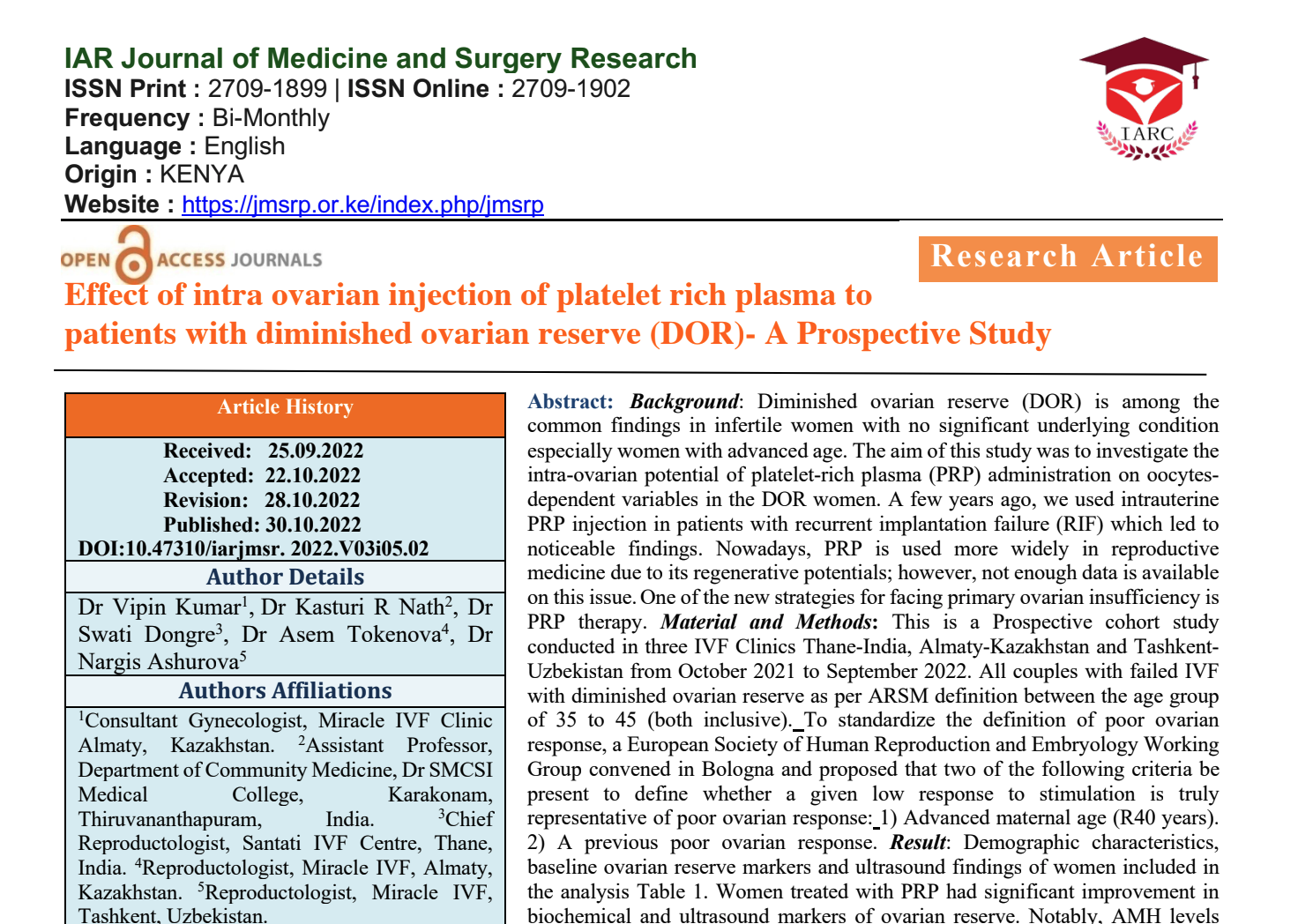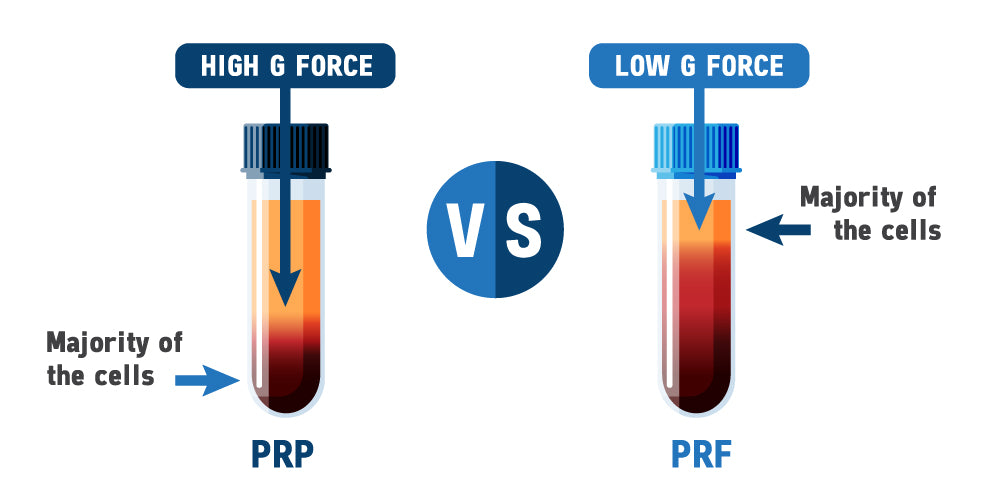Abstract: Background: Diminished ovarian reserve (DOR) is among the
common findings in infertile women with no significant underlying condition
especially women with advanced age. The aim of this study was to investigate the intra-ovarian potential of platelet-rich plasma (PRP) administration on oocytes-
dependent variables in the DOR women. A few years ago, we used intrauterine PRP injection in patients with recurrent implantation failure (RIF) which led to
noticeable findings. Nowadays, PRP is used more widely in reproductive
medicine due to its regenerative potentials; however, not enough data is available
on this issue.One of the new strategies for facing primary ovarian insufficiency is
PRP therapy. Material and Methods: This is a Prospective cohort study conducted in three IVF Clinics Thane-India, Almaty-Kazakhstan and Tashkent-
Uzbekistan from October 2021 to September 2022. All couples with failed IVF with diminished ovarian reserve as per ARSM definition between the age group
of 35 to 45 (both inclusive). To standardize the definition of poor ovarian
response, a European Society of Human Reproduction and Embryology Working
Group convened in Bologna and proposed that two of the following criteria be
present to define whether a given low response to stimulation is truly
representative of poor ovarian response: 1) Advanced maternal age (R40 years).
2) A previous poor ovarian response. Result: Demographic characteristics,
baseline ovarian reserve markers and ultrasound findings of women included in
the analysis Table 1. Women treated with PRP had significant improvement in
biochemical and ultrasound markers of ovarian reserve. Notably, AMH levels
were on average 72% higher following PRP (P < 0.001). Of the 124 women who
underwent IVF/ICSI following participation in the study, those with previous PRP
treatment yielded an average more than 1.5× the number of oocytes collected.
Conclusion: This study revealed that the injection of PRP into human ovaries is
safe and improves ovarian reserve markers as measured by antral follicle count
and serum levels of AMH and FSH. Nevertheless, further studies are needed to
evaluate the impact of PRP on pregnancy outcomes in women undergoing ART.
Click here to read the full text
Note: T-Lab™ System Users receive full access to all studies (in PDF) via their HCP Portal.







